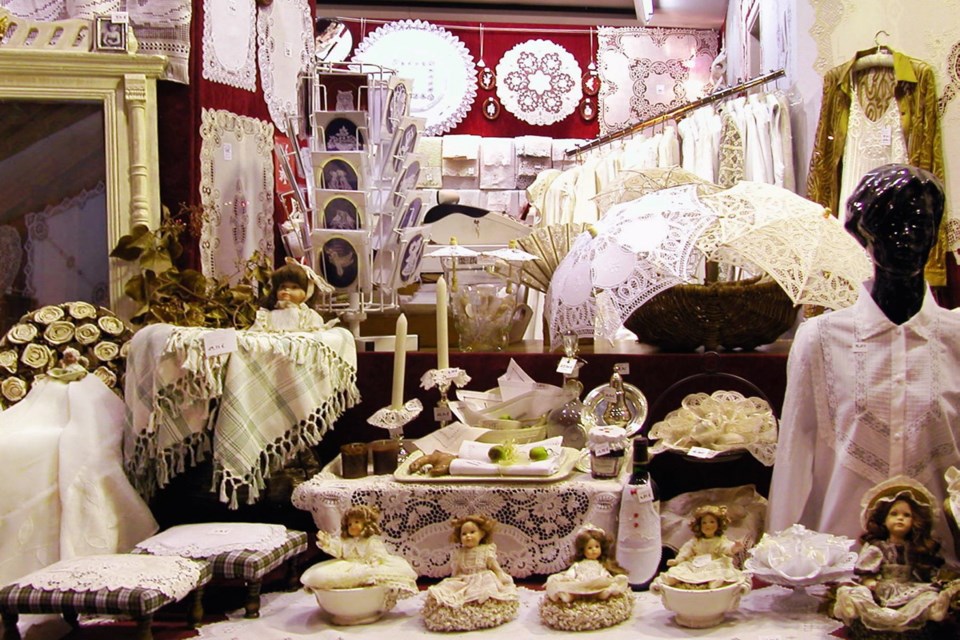Shopping in Europe can be fun, but don’t let it overwhelm your trip. On one guided tour of the British Houses of Parliament, I saw half the group skip out on the tour to survey an enticing array of plastic “bobby” hats, Big Ben briefs and Union Jack panties instead.
Focus on local experiences, and don’t let your trip become a glorified shopping spree.
As a fanatic about packing light, I used to wait until the end of my trip to shop, then go hog wild in the last country I visited (and flew home heavy).
One summer, I travelled with a 16-pound backpack and avoided shopping until the last week of my trip — when, in Spain and Morocco, I managed to accumulate two medieval chairs, two sets of bongos, swords, a mace and a camelhair coat … most of which are now in my attic.
Now I know better and shop light when it comes to souvenirs. Here are a few ideas for lightweight, packable souvenirs found in some of my favourite places in Europe.
Christmas Ornaments in Germany: Rothenburg is one of Germany’s best shopping towns. Figurines, wine glasses and beer steins are easy to find, but if you want to shop light, consider a Christmas ornament.
Rothenburg is the headquarters of the Käthe Wohlfahrt Christmas trinkets empire, which has spread across the half-timbered reaches of Europe.
Tourists flock to the two biggest stores, just below Rothenburg’s Market Square, where they hungrily fill little woven shopping baskets with goodies to hang on their trees (items handmade in Germany are the most expensive).
Museum Gift Shops in Amsterdam: Gift shops at major Dutch museums (such as the Rijksmuseum and the Van Gogh Museum) are a bonanza for shoppers.
Consider picking up books, postcards, unusual posters, decorative items or clever knickknacks featuring works by Rembrandt, Van Gogh or Vermeer. These gift shops are also a good source for books you may not see elsewhere.
Handmade Paper in Sweden: The town of Lessebo in the Swedish Glass Country has a 300-year-old paper mill (handpappersbruket) that’s well worth a visit. Making handmade paper using strictly traditional methods (the newest piece of machinery is from the 1920s), Lessebo’s mill is a study in the way things used to be: Cotton fibres are soaked until they become pulp, packed into a frame, pressed, dried, glazed and hand-torn into the perfect size and shape.
This paper has long been coveted throughout Sweden for special purposes, and its excellent gift shop has artisanal watercolour paper, stationery and cards that will last a lifetime.
Ties in Croatia: Croatian soldiers who fought with the French in the Thirty Years’ War had a distinctive way of tying their scarves. The French found the look stylish, adopted it, and called it à la Croate — or eventually, cravate — thus creating the modern necktie.
If you’re in the Adriatic port of Split, look for Croata, a boutique that sells neckties with traditional Croatian motifs, such as the checkerboard pattern from the flag or characters from Croatia’s ninth-century Glagolitic alphabet.
Lace in Belgium: You can visit high-end stores in Brussels, but Bruges’ Kantcentrum (Lace Centre) is a museum and school that teaches you about lacemaking while you shop.
Exhibits explain the different ways to make lace, and a computer lets you try different techniques yourself — it ain’t easy.
The payoff is upstairs in the demonstration room, where ladies chat merrily while making lace, usually using the bobbin technique perfected in Bruges.
Observe as ladies toss bobbins: They follow mazelike patterns with a forest of pins to help guide their work. The result is on sale in the gift shop, along with materials for making lace on your own.
Soccer Swag in Barcelona: Sports fans love jerseys, scarves, and other gear associated with the wildly popular FC Barcelona (a.k.a. “Barça”) soccer team.
You can find knockoffs at tourist shops, but for the real thing, visit Camp Nou Stadium — Europe’s biggest, with a capacity of over 99,000.
A tour takes you into through the facility and a museum — and at the end, of course, there’s a big shop to buy official Barça gear.
Leather in Florence: Florence’s long leatherworking tradition was born at Santa Croce Church, where Franciscan monks perfected the art of binding gorgeously illustrated manuscripts.
Today, the venerable leather school at the church is the city’s most famous place to buy leather goods, but you’ll see leather for sale all over Florence.
A wallet or belt is a nice, packable purchase.
Wherever you go, avoid souvenir carts outside of big monuments, where the goods tend to be overpriced and cheesy.
Do your shopping in places that offer a fun cultural experience.
If you shop smart and local, a few well-chosen items can help you capture the essence of a place for years to come.
Rick Steves () writes European travel guidebooks and hosts travel shows on public television and public radio. Email him at [email protected] and follow his blog on .


